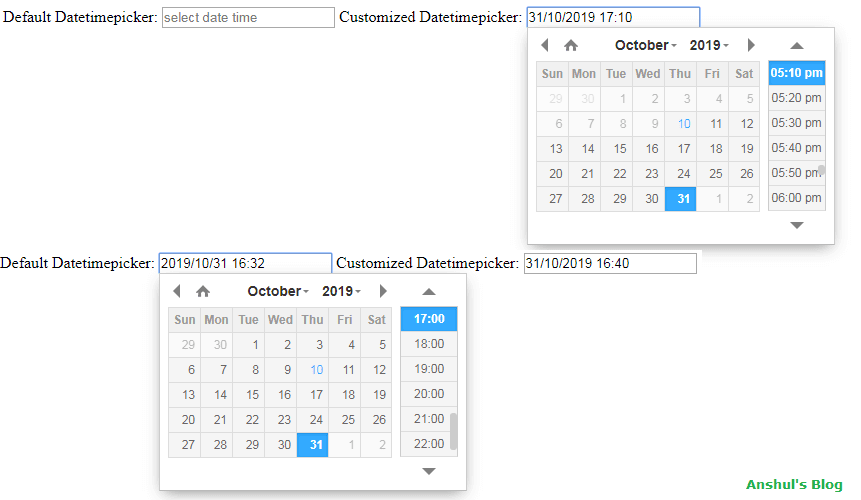
- JAVASCRIPT SETDATE ADD HOURS FOR FREE
- JAVASCRIPT SETDATE ADD HOURS PDF
- JAVASCRIPT SETDATE ADD HOURS CODE
- JAVASCRIPT SETDATE ADD HOURS SERIES
StrMsg = util.printd("mmm dd, yy" h:M",this.modDate) This.getField("DateCreation").value = strMsg StrMsg += " at " + util.printd("h:MM:ss tt", this.creationDate) Var strMsg = util.printd("ddd, mmmm dd, yyyy",this.creationDate)
JAVASCRIPT SETDATE ADD HOURS CODE
This code is included in DatesExample1.pdf in a Document Script named “Init”. The following code formats and places these dates into form fields. Both of these properties are Date Objects.

These dates are provided by two properties of the document object, modDate and creationDate.
JAVASCRIPT SETDATE ADD HOURS FOR FREE
There are two Dates that come for free with every PDF, the creation date and the last modified date. It also shows different date/time formatting strings. The accompanying example PDF, “DatesExample1.pdf” contains sample code for all these situations. For a button field, a trigger must also be selected, “MouseUp” is the best one to use. For all of these items the code is place into a “Run a JavaScript” Action, accessed from the Actions Tab in the appropriate Properties dialog.

This action is executed just before the document is saved.
JAVASCRIPT SETDATE ADD HOURS PDF
This action is executed just before a PDF is printed, so the date stamped on the PDF will reflect the time of printing. When Printed Place the code in the Document “WillPrint” Action.Use this dialog to create and edit Document Scripts. Selecting this menu item will display the Document Scripts Dialog. Menu : “ Advanced > JavaScripts > Document JavaScripts.”.These scripts are executed when the document is first opened in Acrobat. When Opened Place the code in a Document Script.These code locations and the Acrobat menu items for accessing them are listed below. It’s all a matter of where the code is placed. Look up the Util Object and then find the entry for the printd() method.Ī date can be added to the form when it is opened, printed, saved, or at the user’s request. A complete listing is provided in the Acrobat JavaScript Reference. Other symbols are available for printing out the month names, day of week names, and more. This format prints dates that look like “5” for October 15 th, 2005. Each of the three parts has a special meaning “yyyy” means print the year out as 4 digits, “mm” means print the month as 2 digits, and “dd” means print the day of the month out as 2 digits. The “/” is a literal, it will be printed out verbatim to the string. In the example above, “yyyy/mm/dd”, has three parts separated by the “/” character.

JAVASCRIPT SETDATE ADD HOURS SERIES
It’s composed of a series of symbols that represent the different parts of a date and time, like the year, month, day, hour, etc. The first argument to the util.printd() function is a string describing the format of the date and/or time. This function is much better than the date string functions built into the Date Object because it allows us to create almost any custom date format we want. This is where the actual text format of the date string is decided with the util.printd() function. The other half of the line (the part on the right side of the equals symbol), is more interesting. This field property represents the value displayed on the page. The next line assigns a date string to the field’s value. If this field does not exist the code will fail. It is assumed there is a text field on the document with the name “DateField”. The first part, var fld = this.getField("DateField") ,acquires the field object into which the date will be written. There’s a lot to these two lines of code so let’s look at it piece by piece. var fld = this.getField("DateField") fld.value = util.printd("yyyy/mm/dd",new Date()) The code below writes the current date into a form field using a simple date format. One issue that always comes up is deciding how the date should be formatted.

The simplest use is displaying a Date or Time in a Form Field. Part 2 of 3 Placing Dates in a Form Fieldĭates and Times are used for a multitude of purposes in PDF documents.


 0 kommentar(er)
0 kommentar(er)
